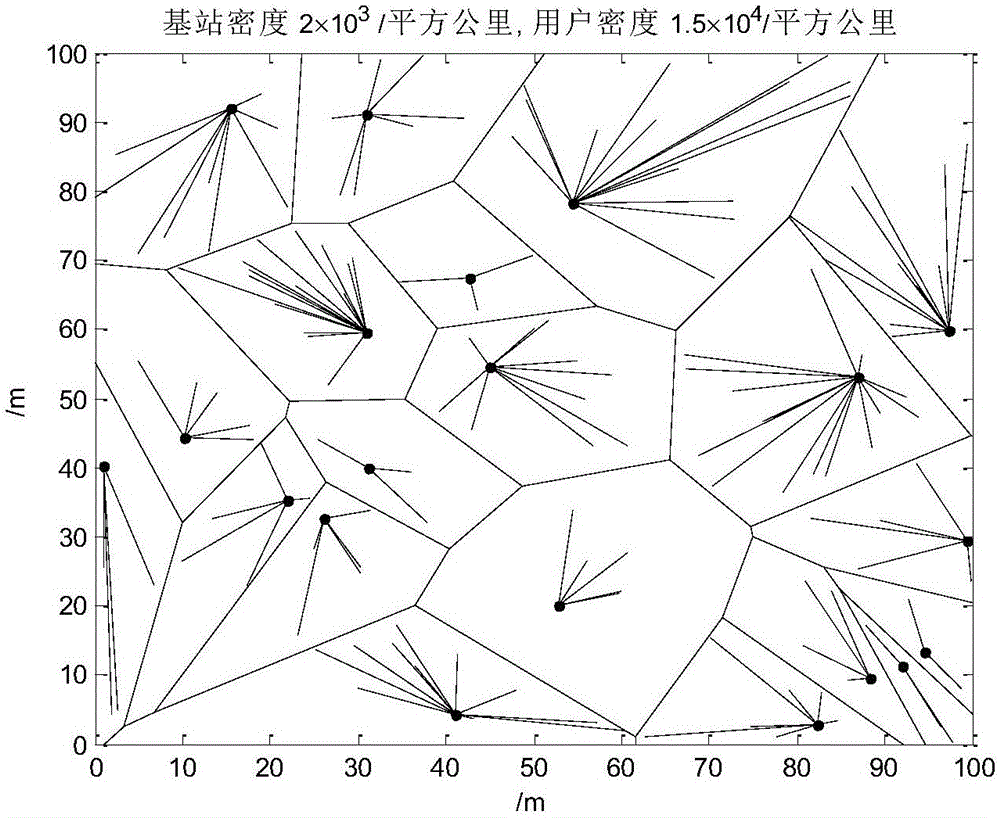Interference coordination method based on resource allocation
A technology of resource allocation and interference coordination, applied in the directions of network traffic/resource management, electrical components, wireless communication, etc., can solve the problems of unbalanced cell load, large differences in the number of users, and difficulty in meeting the data transmission rate requirements of most users. Achieve the effect of improving multiplexing efficiency and overcoming load imbalance
- Summary
- Abstract
- Description
- Claims
- Application Information
AI Technical Summary
Problems solved by technology
Method used
Image
Examples
Embodiment
[0056] Based on the above considerations, the present invention proposes a resource allocation method for an ultra-dense cellular network, which takes users as the center, uploads the interfering base stations that interfere with the user for each user, and allocates resources orthogonal to the interfering base stations for each user.
[0057]It is generally believed that in an ultra-dense cellular network, since the deployment of base stations is often based on business needs, the location of base stations follows the Poisson point distribution, users are evenly distributed in the network area, and the user's contact base station is the nearest base station, such as figure 1 shown.
[0058] refer to figure 2 , according to one embodiment of the present invention, using for example figure 1 The shown irregular topological ultra-dense cellular network, the method for resource allocation of the ultra-dense cellular network includes:
[0059] 1. Build a user-centric interfere...
PUM
 Login to View More
Login to View More Abstract
Description
Claims
Application Information
 Login to View More
Login to View More - R&D
- Intellectual Property
- Life Sciences
- Materials
- Tech Scout
- Unparalleled Data Quality
- Higher Quality Content
- 60% Fewer Hallucinations
Browse by: Latest US Patents, China's latest patents, Technical Efficacy Thesaurus, Application Domain, Technology Topic, Popular Technical Reports.
© 2025 PatSnap. All rights reserved.Legal|Privacy policy|Modern Slavery Act Transparency Statement|Sitemap|About US| Contact US: help@patsnap.com



